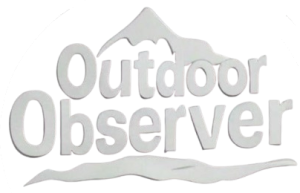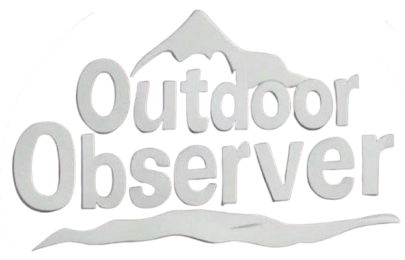This Content Is Only For Subscribers
I’ll never forget the rush of standing on a windswept ridge in Yellowstone last summer, the geysers hissing below, my heart swelling with awe—until I spotted a crumpled soda can, glinting like a cruel taunt against the untouched beauty. We chase these wild places for their magic, scaling Everest’s icy slopes or camping under Montana’s endless stars, our spirits soaring with every hard-won step. But what do we leave behind? On Everest, climbers abandon oxygen tanks and trash, a permanent stain on the world’s highest peak. In our oceans, 8 million tons of plastic—much from outdoor adventures—choke the waves each year, a grim toll we barely notice. We take the thrill, the memories, the Instagram-worthy shots, but leave scars that outlast our footprints. These sacred spaces, Earth’s last bastions of purity, are drowning in our waste. Can we rewrite this story? Let’s find out.
.png)
We’ve all felt it—that electric thrill of pushing our limits in the wild. I remember hiking the Grand Tetons, my legs burning, my chest tight with pride as I reached a lookout, only to find a plastic bag snagged on a pine, flapping like a flag of defeat. Our victories come at a cost. On Everest, climbers leave 12 tons of garbage each year—tents, oxygen tanks, even human waste—turning a sacred summit into a landfill. Out in the Pacific, I’ve kayaked with friends, marveling at the ocean’s expanse, but the Great Pacific Garbage Patch looms larger than Texas, a floating graveyard of our carelessness. Here in the U.S., parks like Yosemite bear the weight of 4 million pounds of trash annually, left by folks who came to escape, not to destroy. The tragedy cuts deeper: sea turtles choke on plastic bags, thinking they’re jellyfish; bears in the Rockies scavenge wrappers, forgetting how to hunt. Our triumphs in the wild are writing a tragic ending for the planet we claim to love.
.png)
I’ve trekked to Everest Base Camp, my heart racing with every glimpse of the peak, but the Sherpa guides who got me there carry a heavier burden. They lead us with quiet strength, earning 70% of their income from tourism, but the trash we leave behind poisons their streams—I read that diarrhea rates among their kids have jumped 15% because of contaminated water. In the Pacific Islands, I’ve watched indigenous fishermen cast their nets under a blazing sun, their laughter as warm as the day, but plastic pollution has slashed their fish stocks by 20%, leaving their families hungry. Closer to home, I’ve driven through Gatlinburg near the Smoky Mountains, a charming town that thrives on park visitors like us. Yet, the 1.5 million pounds of trash we leave each year clog their landfills, draining 10% of their budget for cleanups—a steep price for our weekend getaways.
-scaled.jpg)
Here’s the gut punch: these communities live lighter than we ever will. A Sherpa’s carbon footprint is a mere 1 ton a year; mine, as an American, is 16. We revel in the wild’s joy, but they inherit our sorrow. Protecting these places isn’t just about saving nature—it’s about righting a wrong for the people who suffer most from our mess.
We’ve turned triumph into tragedy, but we can pivot from neglect to nurture—I’ve seen it work. Last year, I rented a tent from REI for a trip to Glacier National Park, a small choice that meant one less piece of gear gathering dust in my closet. REI’s rental programs are catching on, cutting waste by encouraging us to borrow, not buy. They’ve also got this “PackSavvy” campaign that stuck with me: pack out every scrap, they say, so the wild stays wild. I’ve started bringing a metal water bottle on hikes—no more plastic waste to haunt me.
-1024x683.jpg)
There’s more we can do. The “Leave No Trace” movement has changed how I adventure—their rule to “pack out what you pack in” is simple but powerful, and over 100 million people globally have joined in. In the U.S., I’ve volunteered with the National Park Service at Zion, where we hauled out 500,000 pounds of trash in a single year. Check nps.gov—you’ll find a cleanup near you. On a global scale, The Ocean Cleanup is pulling 100,000 pounds of plastic from the Pacific annually; I donated $20 last month, knowing it helps. These steps aren’t just fixes—they’re a promise to nurture the wild places we’ve neglected for too long.
-scaled.jpg)
I’ve left my own messes in the wild, but I’m learning to do better—and you can too. Next time you hike in the Adirondacks, stuff a reusable bag in your pack and pick up trash along the way. Join a Sierra Club cleanup—I did one last spring, and the feeling of leaving a trail cleaner than I found it was pure gold. Commit to “Leave No Trace” on every trip; it’s a small promise with big impact. Picture the quiet pride of knowing a bear in the Rockies can forage naturally, or a fish in the Pacific swims free, because of you. Every piece of trash you remove plants a seed of renewal—some will grow into a movement that heals our wild places. As “Trailbreakers of Insight,” let’s act: support sustainable brands, advocate for cleaner parks, and inspire others. The wild deserves our care, not our scars.
-scaled.jpg)
Let’s return to that windswept ridge in Yellowstone, where I once stood, heart full of awe. This time, there’s no soda can—just the geysers hissing, the horizon clear, the wild as pure as it should be. On Everest, climbers descend, leaving only footprints; the peak gleams under fresh snow. We’ve rewritten the story—our adventures now heal, not harm. As “Trailbreakers of Insight,” your choices today can restore Earth’s last pristine places, ensuring they thrive for generations. Let’s commit to this legacy: take only memories, leave only footprints, and give the wild the purity it deserves.
-1024x685.jpg)



